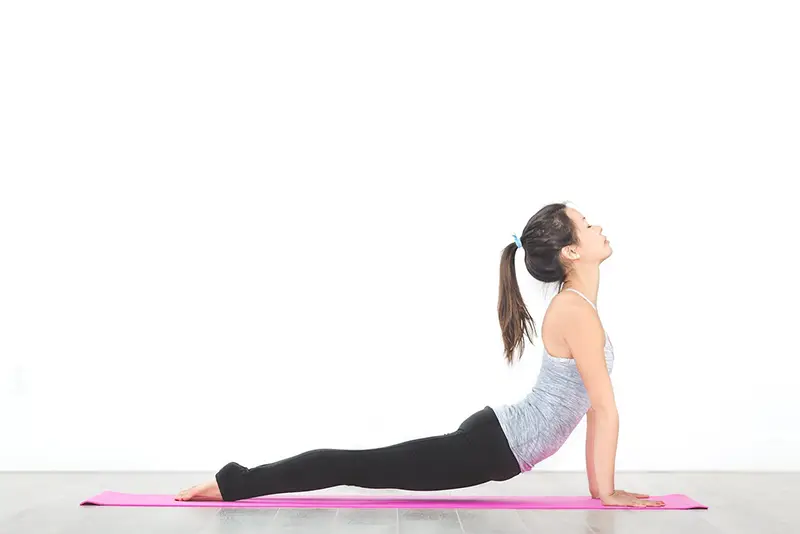Relief of Pelvic Pain Through Exercise
Introduction
The importance of regular physical activity in managing pelvic pain is undeniable. Often underestimated, these pains can significantly impact quality of life. This article aims to guide you through various tips and suitable exercises that you can easily integrate into your daily routine. We will also discuss the role of mobile applications in monitoring and optimizing your physical activity, especially during menstrual periods, for effective and personalized relief of pelvic pain.
Tips for Relieving Cramps During Exercise
Choosing the Right Physical Activity
The choice of physical activity is crucial in relieving pelvic pain. It is recommended to opt for low-impact activities, such as swimming or cycling, which maintain good physical condition without excessively straining painful areas. These sports promote blood circulation and help relax the pelvic muscles, thus providing significant relief from cramps and pain.
Importance of Warming Up
Warming up is often overlooked but is essential to prevent injuries and cramps during physical activity. It is advisable to start each session with gentle and gradual movements, paying particular attention to the pelvic areas. This prepares the body for effort and helps minimize the risk of post-exercise pain. A well-conducted warm-up also improves flexibility and mobility, key elements for a safe and enjoyable sports practice.
Hydration and Nutrition
Good hydration and a balanced diet play a pivotal role in preventing and relieving exercise-related pelvic pains. Water helps maintain proper tissue hydration, thus promoting better muscle recovery and reducing cramps. Additionally, a diet rich in anti-inflammatory nutrients, such as omega-3s found in fatty fish, fruits, and vegetables, can help reduce inflammation and pain sensations.
Read more: The Importance of Hydration During Menstruation: Tips and Tricks
Listening to Your Body
The importance of listening to your body cannot be understated. Each individual is unique, and pain thresholds vary from person to person. It is therefore essential to adjust the intensity and duration of physical activity based on your body’s signals. If you experience an increase in pain, it is wise to reduce the effort or take a break. This active listening promotes a personalized approach to exercise, allowing you to benefit from its advantages while minimizing the risk of increased pain.
Relieving Pelvic Pain with Home Exercises
Pelvic Floor Strengthening Exercises
Pelvic floor strengthening exercises, such as Kegel exercises, are particularly recommended for those suffering from pelvic pain. These exercises help strengthen the muscles supporting the uterus, bladder, and rectum, thus providing better support for these organs. By strengthening these muscles, one can not only prevent pain but also improve certain bodily functions, such as urinary and sexual continence. Regular practice of Kegel exercises can significantly improve the quality of life for those affected.
Yoga and Stretching for Pelvic Flexibility
Yoga and targeted stretching are excellent ways to work on the flexibility and relaxation of the pelvic muscles. These practices promote relaxation, reduce stress, and allow for better pain management. Specific yoga poses, such as the child’s pose or pigeon pose, can be particularly beneficial for stretching and relaxing areas around the pelvis. Regular integration of these exercises into your routine can contribute to a significant improvement in daily comfort.
Relaxation and Breathing Techniques
Relaxation and deep breathing techniques are powerful tools in managing pelvic pain. They help reduce the body’s overall stress level, which can decrease the perception of pain. Practicing meditation or diaphragmatic breathing helps focus the mind and relax the muscles, creating a general state of well-being that can alleviate painful sensations in the pelvic region.
Read more: How Chinese Medicine Can Transform Your Management of Menstrual Pain
Physical Exercise Tracking Apps During Menstruation
Overview of Useful Apps
Using mobile apps to track physical exercises during menstruation can be extremely helpful. These apps allow for the customization of exercise routines based on the different phases of the menstrual cycle, offering tailored advice to maximize pain relief. They can include exercise recommendations, nutritional advice, and even specific relaxation techniques for each phase of the cycle.
How These Apps Can Help
These apps offer personalized support, taking into account hormonal fluctuations and specific symptoms of each individual. By providing tailored exercise routines, they help maintain regular physical activity, which is essential for managing pelvic pain. Additionally, they can serve as a journal to track progress and the body’s responses to different types of exercises, allowing for adjustments to routines for optimal relief.
User Testimonials
User testimonials highlight the effectiveness of these apps in managing pelvic pain. Many report a notable improvement in their quality of life through regular use of these digital tools. These testimonials can encourage others suffering from similar pains, showing that it is possible to find effective strategies to manage their condition.
Conclusion
Physical activity, when adapted and regular, plays a key role in relieving pelvic pain. By combining targeted exercises, attentive listening to one’s body, and using digital tools for tracking and customizing routines, it is possible to significantly reduce discomfort associated with these pains. It is important to remember that each person is unique and that the key to success lies in patience, perseverance, and adapting advice to one’s own situation.
FAQ
What sport is most recommended for relieving pelvic pain?
Low-impact activities like swimming and cycling are particularly recommended because they allow for maintaining physical activity without putting excessive pressure on the pelvis.
How much time per day should I dedicate to these exercises?
A daily practice of 20 to 30 minutes is generally sufficient to observe improvements, but the important thing is to stay consistent and adjust the duration based on your abilities and health condition.
Is it safe to exercise during menstruation?
Yes, engaging in moderate physical activity during menstruation can even help relieve cramps and discomfort. The key is to listen to your body and adjust the intensity of the exercise according to your sensations.
How do I know if an exercise is doing more harm than good?
If you experience increased pain during or after exercise, it may indicate that the activity is not suitable for your condition. It is advisable to reduce the intensity or choose another gentler type of exercise.
Are tracking apps really effective?
Yes, they can be very useful for personalizing your exercise program and tracking your progress. Their effectiveness depends on regular use and the accuracy of the information provided.







